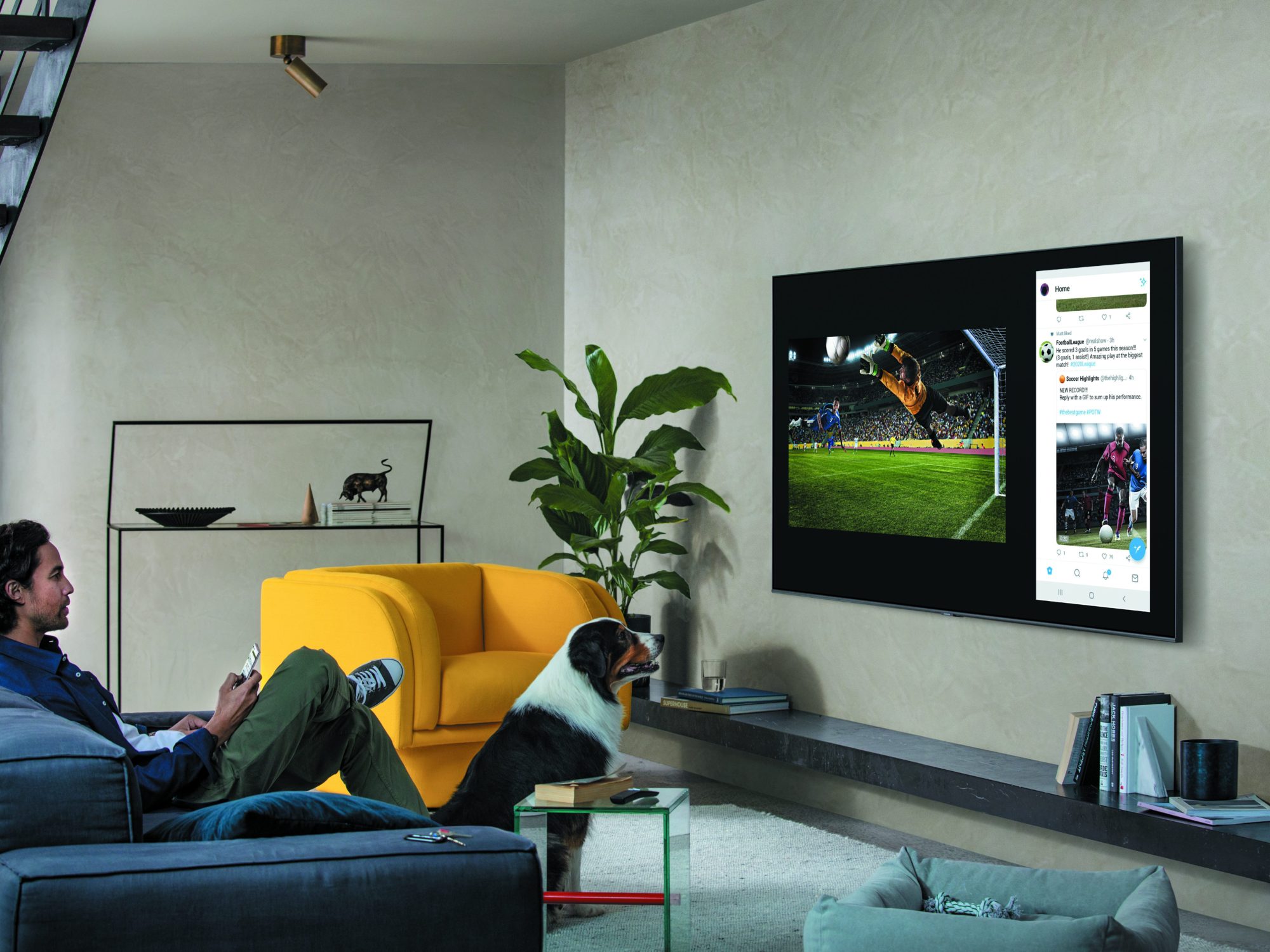Staying connected – while being apart – over the last 16 months has been the biggest challenge for many of us. Fortunately, we have the most advanced technology the world has ever seen. This technological wonder has been – in many ways – the backbone of our continued humanity, commerce and support systems. Just imagine your own pandemic experience without the connectivity of the tools, platforms and networks that kept us together.
Now look forward. We’ve seen incredible shifts in media consumption and behaviours. Marketers have more tools to engage with consumers than ever. And it’s just starting. With the rise of more connected devices, new opportunities are opening up to personalize and better reach target consumers. That’s where Dave Pauk comes in. As Regional Sales Director for Samsung Ads in Canada, he saw an unprecedented opportunity to build something new for a multinational company. Here, he shares his experience and insights regarding Samsung’s advanced TV solutions and offerings. Clearly, the opportunity to be better connected offers the potential for explosive growth for the company in this market.
TV Enters A New, Connected Era
Connected TV is still a very nascent part of the media business, highlights Dave. There’s still a lot of learning and a lot of growth opportunities as it just started in April 2019.
With Samsung Ads, the organization owns its own first party data collected in Canada from over 3 million Samsung Smart TVs.
This unique ecosystem capability provides incredible one-to-one insight into household viewership consumption. With this information, Dave knows that Samsung is able to target those households more discretely. Often, this means leveraging insights based on viewing behaviours, location and exposure to linear ads. Plus, layer on other addressable devices that are in a household, such as a smartphone, tablet or laptop. Together, Samsung is now able to holistically understand the reach and frequency of ads and usage within those households.
The technology Samsung Ads uses is called ACR, which is an acronym for automatic content recognition. Leveraging ACR allows Samsung to understand everything that is playing at the glass level of a Samsung Smart TV.
Regardless of where you’re getting your content from – it could be a cable set top box or it could be a streaming stick or a game console – Samsung is able to understand viewer behaviours.
The magic, Dave notes, is that it allows marketers to de-silo their digital ad thinking.
A More Holistic Digital Consumer Insight
At Samsung Ads, features that are really popular with advertisers are focused on driving incremental reach, Dave shares. This is essentially understanding if someone has been exposed to an ad within the household on linear TV or OTT (Over the Top streaming media), or on a smartphone. From there, and by excluding them from the targeting pool, Samsung is able to only send out ads to households that have not seen them yet. It also gives Samsung the ability to manage ad frequencies.
Rather than just bombarding the same households over and over and over with the same ad, the system can understand the holistic frequency per household.
Another feature that Dave is excited about is competitive conquesting. This is a popular strategy where Samsung Ads can serve competitive ads to households. For instance, if you’re an auto manufacturer and you want to conquest one of your competitors, Samsung Ads can understand that the household has recently seen a Ford or GM ad. For a competitive brand, they can invest to one-up their competitors in a retargeting manner.
Dave continues that there’s also the “cord cutters” and “cord nevers” where Samsung Ads can identify households that just don’t have a linear box. Simply put, they’re only watching streaming content.
Based on the analytics, streaming-only consumers represent 19% of all Samsung TV households and linear-only households represent 12%.
So the remaining 69% are consuming both. With the pandemic, Dave has observed that TV watching has increased to levels never seen before. Most households don’t really care what format the content comes through. They just turn the TV on and want to discover it and be able to consume their TV experience in an enjoyable way.
A Connected Ecosystem Goes to the Next Level
With expanding IoT (Internet of Things) opportunities, connecting smartphones, TVs, tablets and other existing devices are only going to grow. For instance, screens on Samsung fridges are being explored with CPG clients to promote food recipes using their products. Dave notes that Samsung is able to make this as natural an experience as possible for the consumer. It can’t seem like an interruption or an irritant.
Samsung Ads need to be relevant and valuable to actually help consumers do something that benefits their lives. In this way, it’s almost like content or product placement in a movie.
It’s meant to be very natural and complementary to their own experience. Imagine that you’re almost out of a CPG product in your fridge. Seeing an ad would enable you to add it to your digital shopping list or to your online grocery delivery service.
How’s that for making a stronger, more relevant and connected experience!? Stay tuned as there’s much more to come in this exciting new space.
In Partnership With
Dave Pauk is the Regional Sales Director, Canada at Samsung Ads. As an Advanced TV and Digital advertising specialist, he excels at utilizing TV data and industry trends to leverage actionable audience insights and develop winning strategies for media agencies and their clients. In addition to his involvement on the IAB Canada Ad Tech Council, Dave is also a current member of their Video & Programmatic Councils.
Tim Bishop, CM is a multi-disciplined executive with a proven record of optimizing strategic efforts to expand the influence of leading organizations, such as the Canadian Marketing Association, Cineplex Entertainment, Lavalife.com, IMI International and Northstar Research Partners. In Partnership With is his latest focus to curate Canadian marketing experts to celebrate the power of strategic partnerships in a perspective-based content series.

